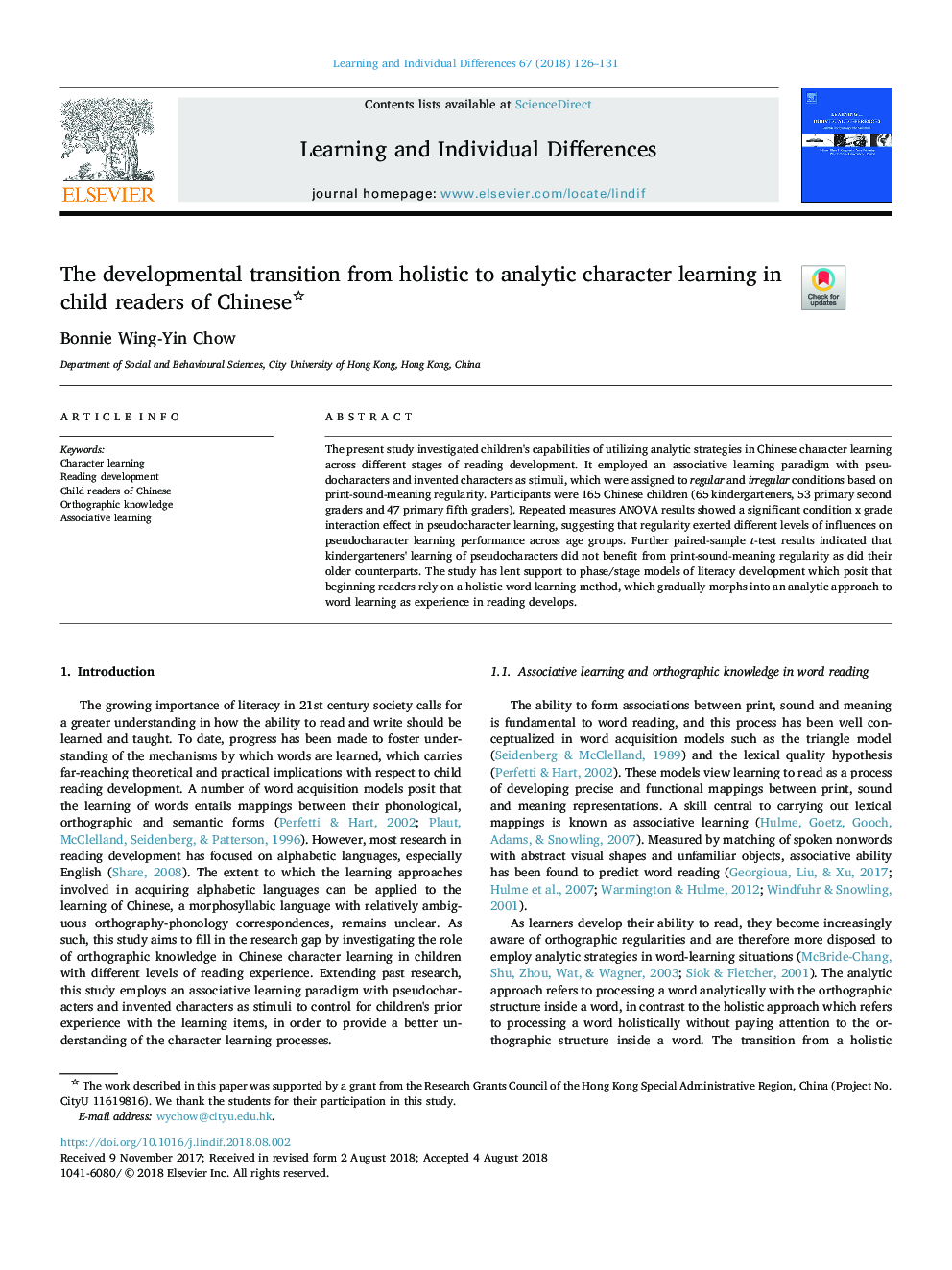| Article ID | Journal | Published Year | Pages | File Type |
|---|---|---|---|---|
| 11002156 | Learning and Individual Differences | 2018 | 6 Pages |
Abstract
The present study investigated children's capabilities of utilizing analytic strategies in Chinese character learning across different stages of reading development. It employed an associative learning paradigm with pseudocharacters and invented characters as stimuli, which were assigned to regular and irregular conditions based on print-sound-meaning regularity. Participants were 165 Chinese children (65 kindergarteners, 53 primary second graders and 47 primary fifth graders). Repeated measures ANOVA results showed a significant condition x grade interaction effect in pseudocharacter learning, suggesting that regularity exerted different levels of influences on pseudocharacter learning performance across age groups. Further paired-sample t-test results indicated that kindergarteners' learning of pseudocharacters did not benefit from print-sound-meaning regularity as did their older counterparts. The study has lent support to phase/stage models of literacy development which posit that beginning readers rely on a holistic word learning method, which gradually morphs into an analytic approach to word learning as experience in reading develops.
Related Topics
Social Sciences and Humanities
Psychology
Developmental and Educational Psychology
Authors
Bonnie Wing-Yin Chow,
